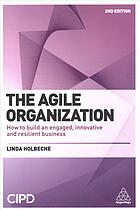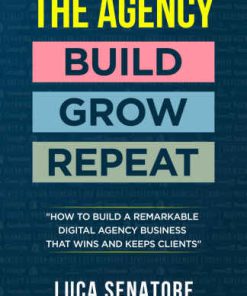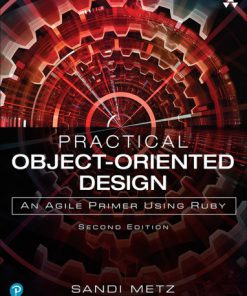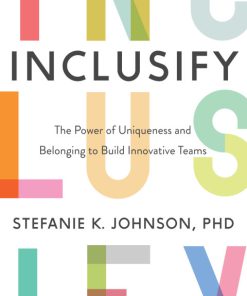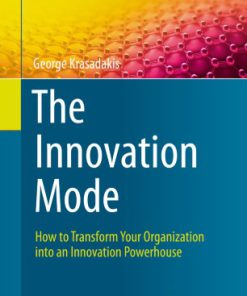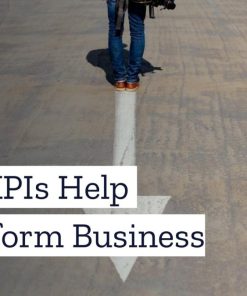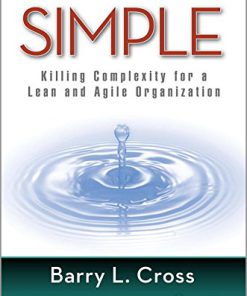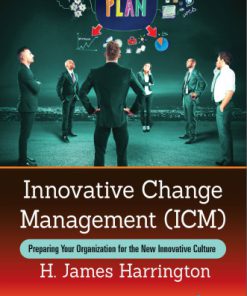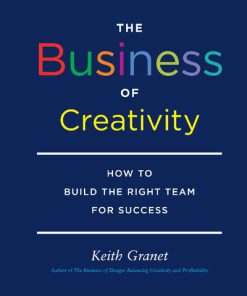The Agile Organization How to Build an Engaged Innovative and Resilient Business 2nd Edition by Linda Holbeche ISBN 0749482656 9780749482657
$50.00 Original price was: $50.00.$25.00Current price is: $25.00.
The Agile Organization How to Build an Engaged Innovative and Resilient Business 2nd Edition by Linda Holbeche – Ebook PDF Instant Download/Delivery: 0749482656, 9780749482657
Full download The Agile Organization How to Build an Engaged Innovative and Resilient Business 2nd Edition after payment
Product details:
ISBN 10: 0749482656
ISBN 13: 9780749482657
Author: Linda Holbeche
In today’s volatile and ambiguous world, organizations need to have the capacity and flexibility to respond rapidly to changes in their environment, both internally and externally. The key to retaining this competitive advantage is agility, a set of capabilities that help organizations adapt with the full co-operation of their employees.
Packed with helpful checklists, tips and advice, The Agile Organization is a practical blueprint to building both agility and resilience at individual, team and organizational levels.
This revised second edition contains a new chapter on the latest approaches to agile organization design in light of digitization and customer-centricity, as well as new and updated case studies from the University of California, Berkeley, the UK National Health Service (NHS), SNC-Lavalin’s Atkins business and General Electric (GE). It remains the ‘go to’ guide for HR and OD specialists, senior leaders and managers who want to help bring about organizational transformation and build a sustainably agile business while enhancing employee engagement and resilience.
The Agile Organization How to Build an Engaged Innovative and Resilient Business 2nd Table of contents:
-
Chapter 1: Defining an Agile Organization
- Key principles of agility: flexibility, responsiveness, and adaptability.
- The difference between traditional and agile organizational structures.
- Case studies of successful agile organizations.
-
Chapter 2: Building an Agile Leadership Framework
- The role of leadership in fostering an agile mindset.
- Developing leadership capabilities for driving change and innovation.
- Strategies for leading teams with agility and resilience.
-
Chapter 3: Cultivating a Culture of Innovation
- How to create an environment that encourages creativity and experimentation.
- Aligning innovation with business strategy and customer needs.
- Best practices for managing innovation pipelines and measuring success.
-
Chapter 4: Empowering Employees for Engagement and Autonomy
- The importance of trust and autonomy in building engaged teams.
- Creating a work environment that supports collaboration and continuous learning.
- Developing feedback loops and recognition systems for motivation.
-
Chapter 5: Organizational Design for Agility and Flexibility
- How to structure teams, roles, and workflows to maximize agility.
- The role of cross-functional teams and decentralized decision-making.
- Designing processes that allow for quick pivots and responsiveness.
-
Chapter 6: Agile Methodologies and Tools for Business Success
- Overview of popular agile frameworks: Scrum, Kanban, Lean, etc.
- How to implement agile methodologies in non-tech environments.
- Tools and software that support agile collaboration and workflow management.
-
Chapter 7: Resilience in an Agile Organization
- Building resilience to navigate uncertainty and change.
- Strategies for managing risk, recovering from setbacks, and learning from failure.
- Developing a resilient organizational mindset that embraces disruption.
-
Chapter 8: Customer-Centric Agility: Adapting to Changing Market Demands
- The role of customer feedback in agile organizations.
- How to maintain customer focus while remaining flexible.
- Examples of agile approaches in product development, marketing, and customer service.
-
Chapter 9: Measuring Success: Metrics for Agile Transformation
- Key performance indicators (KPIs) for tracking agile maturity.
- Measuring the impact of agility on employee engagement, innovation, and financial performance.
- How to assess and refine agile processes continuously.
-
Chapter 10: Scaling Agility Across the Organization
- Best practices for scaling agile principles across departments or large enterprises.
- Overcoming challenges in scaling and ensuring alignment.
- Case studies of organizations that successfully scaled agility.
-
Chapter 11: Overcoming Barriers to Agility
- Common pitfalls and obstacles in implementing agile practices.
- Overcoming resistance to change and fostering a growth mindset.
- Practical solutions for navigating roadblocks and sustaining momentum.
-
Chapter 12: The Future of the Agile Organization
- Trends in business agility and innovation for the next decade.
- The evolving role of technology in supporting agile organizations.
- Preparing for the future: How to maintain agility in an ever-changing world.
People also search for The Agile Organization How to Build an Engaged Innovative and Resilient Business 2nd:
the agile organization
senior leadership teams and the agile organization
linda holbeche the agile organization
the agile organization linda holbeche pdf
the agile organization pdf
Tags:
Linda Holbeche,Agile Organization,Engaged Innovative,Resilient Business
You may also like…
Business & Economics - Sales & Marketing
Computers - Programming
Business & Economics
Inclusify: The Power of Uniqueness and Belonging to Build Innovative Teams Johnson
Cookbooks
Business & Economics
Business & Economics - Management & Leadership
Simple : killing complexity for a lean and agile organization 1st Edition Cross
Business & Economics - Management & Leadership
Business & Economics - Management & Leadership
The Business of Creativity How to Build the Right Team for Success Keith Granet


